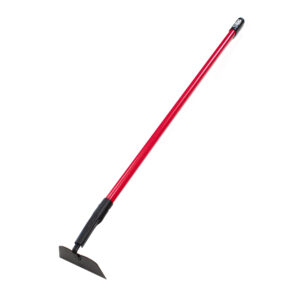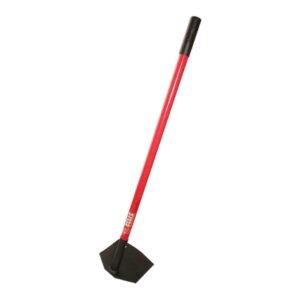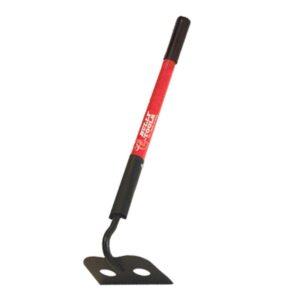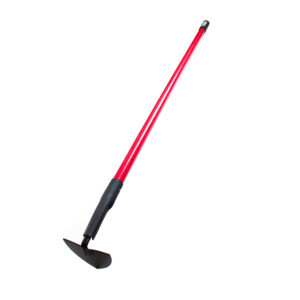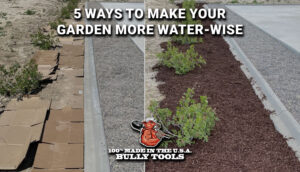The Bully Tools Guide To Garden Hoes
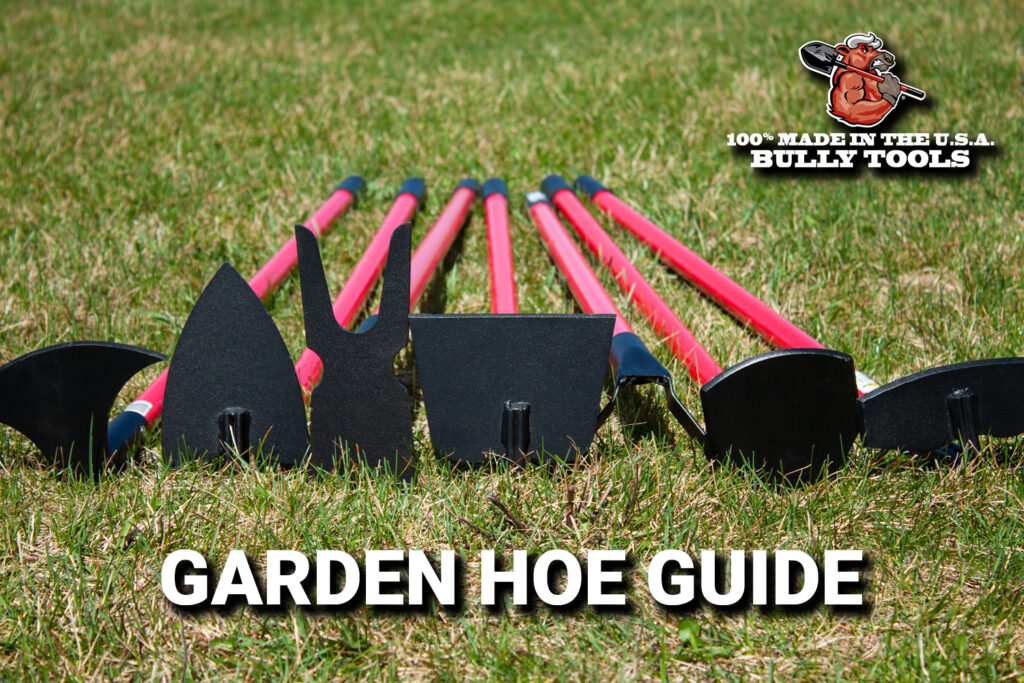
Paddle, Warren, Half-moon, Onion – What do all of these things have in common?
Seemingly nothing – but any seasoned horticulturist can tell you that these are just a few of the names for the many varieties of gardening hoes! As one of the most useful garden tools, we bet you have a hoe or two in your shed, or maybe you’re looking to purchase one this season. We’re going to break down how to choose the right hoe for your upcoming project and give you some background on each variation, the proper way to use each of them, and lay out some tips to help you put your garden hoe to use this growing season.
Read on to learn about the tool that will make you fall in love with weeding – the garden hoe.
CHOOSING THE RIGHT GARDEN HOE
Garden hoes are available for purchase in many different shapes, sizes, and designs. The original design had a thick steel blade attached to the handle at an angle of a little less than 90-degrees and has been used by agriculturalists for centuries.
As more specialized gardening practices became popular, variations of garden hoes were created to help with these projects. These new kinds featured tines and different-shaped blades, as well as varying handle lengths.
Garden hoes are used, typically, for either mixing/tilling soil or weeding plots of land. Weeding hoes, digging hoes, and specialty hoes are three classifications of garden hoes but each can be broken down more extensively.
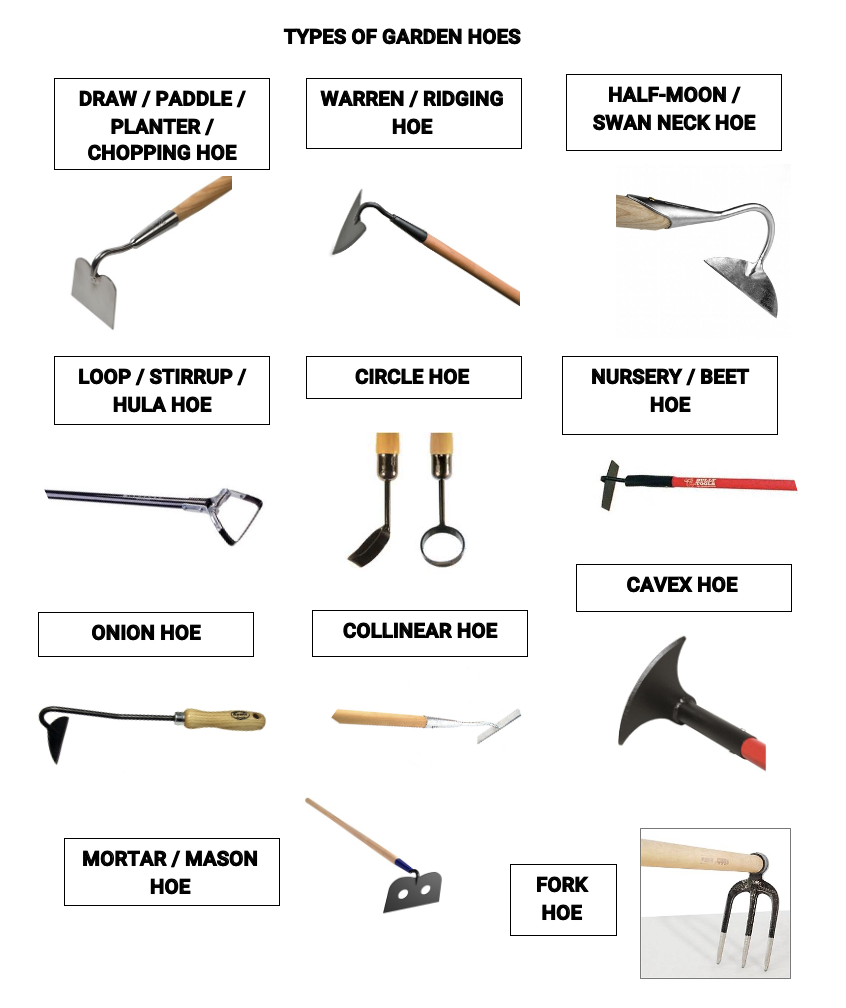
WEEDING HOES
- perfect for light cultivation and cutting/pulling weeds from the roots
- gently pull the hoe towards you to loosen dirt, rocks, and sod
- types of weeding hoes
- draw hoes – draw, half-moon, nursery, onion, warren
- sweeping hoes – loop, circle, collinear
DIGGING HOES
- have thick blades designed to gain momentum when the user swings the tool down
- helpful when chopping through tough soil or thick vines
- ex. field hoe, fork hoe
SPECIALTY HOES
- hoes created to assist in very specialized projects
- ex. cavex hoe, mortar hoe
There are many garden hoes on the market, and you might know them by any number of names. We’re going to lay out the most popular garden hoes that you might need for your summer projects and break down what exactly they’re best used for and why.
HOW TO USE EACH TYPE OF GARDEN HOE
WEEDING HOES
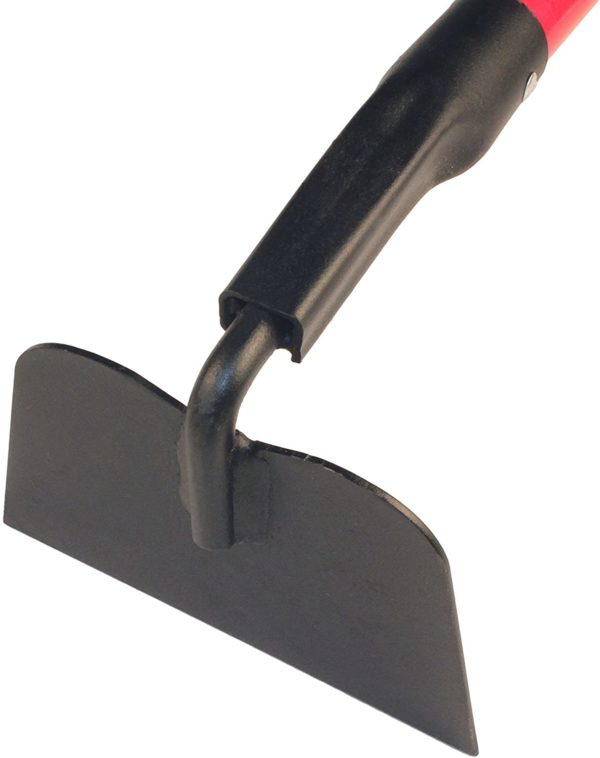
DRAW / PADDLE / PLANTER HOE
A draw hoe is probably what you think of when you think of a basic garden hoe. It is ideal to use when dislodging weeds in your garden or cultivating your garden’s soil. As the name suggests, it was designed to be drawn or pulled towards the user. Its blade, also called its paddle, is attached at a right angle to the hoe’s handle.
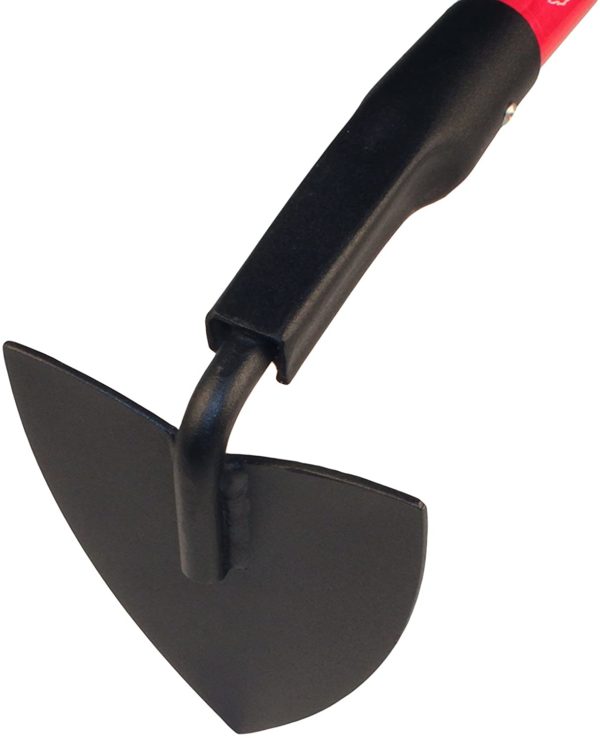
WARREN / RIDGING HOE
Warren hoes have triangular-shaped tips. They are useful when weeding tight spaces, tilling, and creating furrows for seeding. The pointed blade allows users to easily part soil to create long, neat rows for your crops or flora to grow in.
HALF-MOON / SWAN NECK HOE
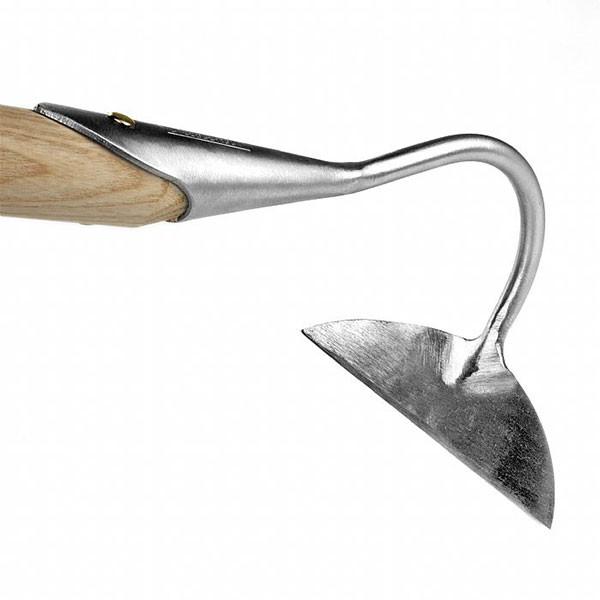
Half-moon hoes feature a distinctive half-circle – or half–moon–shaped blade that is attached to the tool’s handle by a curved neck. This variation of garden hoe was designed to be adjustable so that gardeners could change the angle of the blade to best suit their project. Pull your half-moon hoe lightly across the ground to gently mix soil or to weed.
NURSERY / BEET HOE
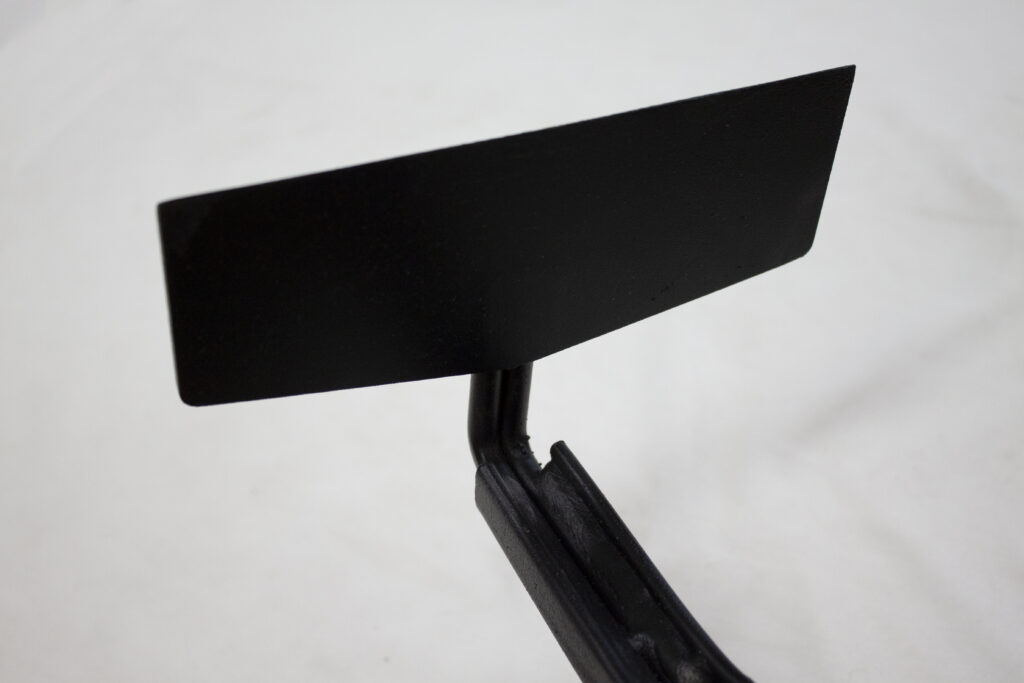
Nursery hoes are known for their long straight-edged blades attached to a curved neck. They are ideal for cutting, weeding, making furrows for planting, and turning tough soil. The blade is shorter than others, so you can get those tight spaces around your house. It gets its name because the sheared ears allow users to get close to the leaves of beet plants, but beet hoes are incredibly versatile for all sorts of lawn and garden maintenance.
ONION HOE
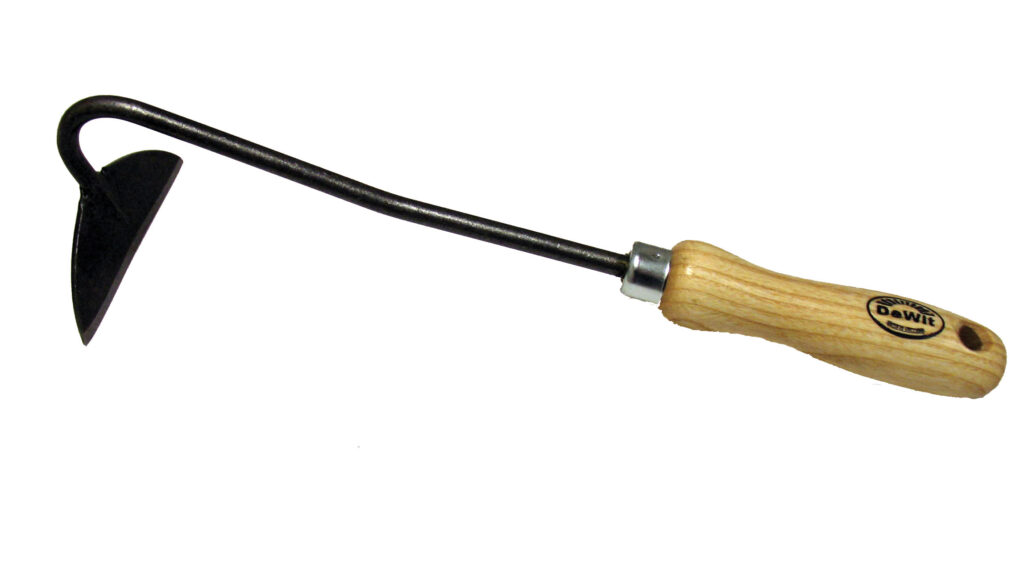
Onion hoes are similar to half-moon hoes in blade design, but the distinct difference is that onion hoes are typically made smaller. This hand-held tool lets users turn the top few layers of soil lightly and easily, while maintaining soil structure and getting rid of any weeds, and its small size allows you to get in between plants without disturbing anything else around it.
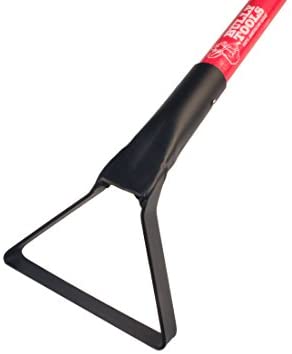
LOOP / STIRRUP / HULA HOE
Loop hoes have open, loop-shaped blades that are attached to the handle by a pivoting piece that keeps the blade moving back and forth in the soil. The open blade is sharpened on all sides which allows it to smoothly and easily glide through soil – and even gravel – to dislodge small weeds. Use a loop hoe in a full-upright position, with the end of the handle pointing straight towards the sky for optimal results.
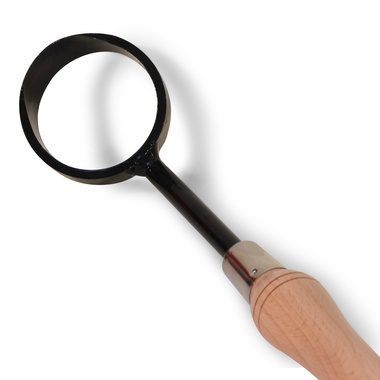
CIRCLE HOE
A hoe with a small, open ring-shaped blade is a circle hoe. If you’re more into close-ground weeding, a variation of this hoe is also available with a short, handheld grip. Otherwise, the long handle option allows you to easily cut weeds and loosen soil with its fully sharpened round edge. The rounded edge allows you to get close to weeds without damaging other nearby plants.
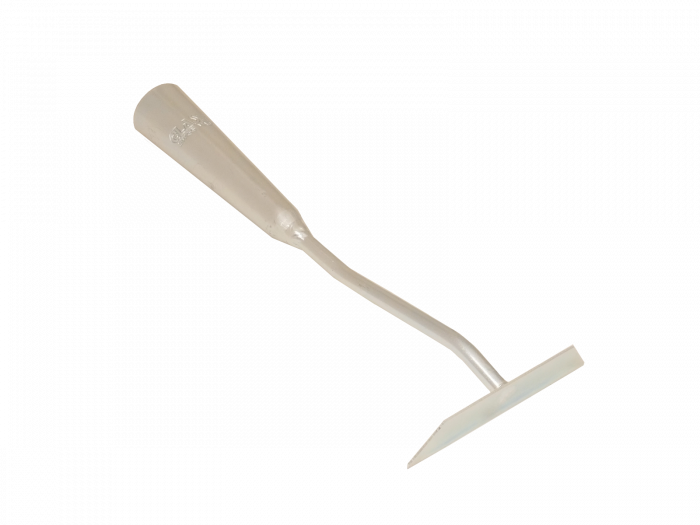
COLLINEAR HOE
Collinear hoes look very similar to both nursery and onion hoes, but unlike either of those, a collinear hoe’s blade is attached to the handle at an angle that makes it parallel to the ground. Make sure when using a collinear hoe to keep the tool fully upright with the handle pointing to the sky. This is important because collinear hoes are meant to be used in a sweeping motion along your lawn or soil. This allows the blade to swiftly chop and uproot the pesky weeds that are bound to litter your yard.
DIGGING HOES
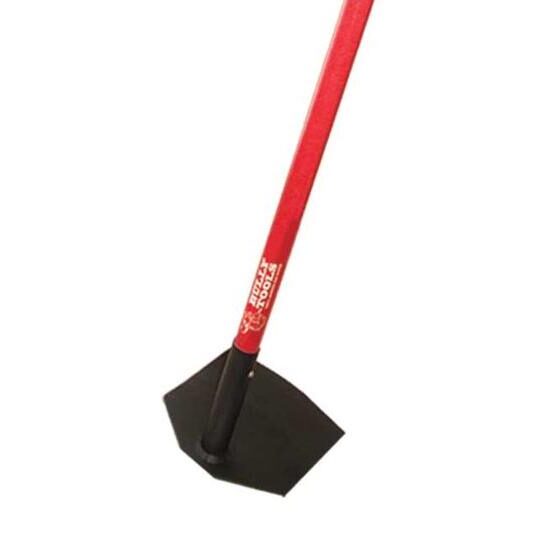
FIELD / CHOPPING HOE
Field hoes have thick blades that allow users to easily chop through soil or thick vines and weeds. The blade’s weight ensures that the tool gains momentum while you swing it down through the air. This tool is perfect for cutting, weeding, and turning tough soil around your lawn and garden. Chop in small sections and slowly shake the handle to toss the soil gently.
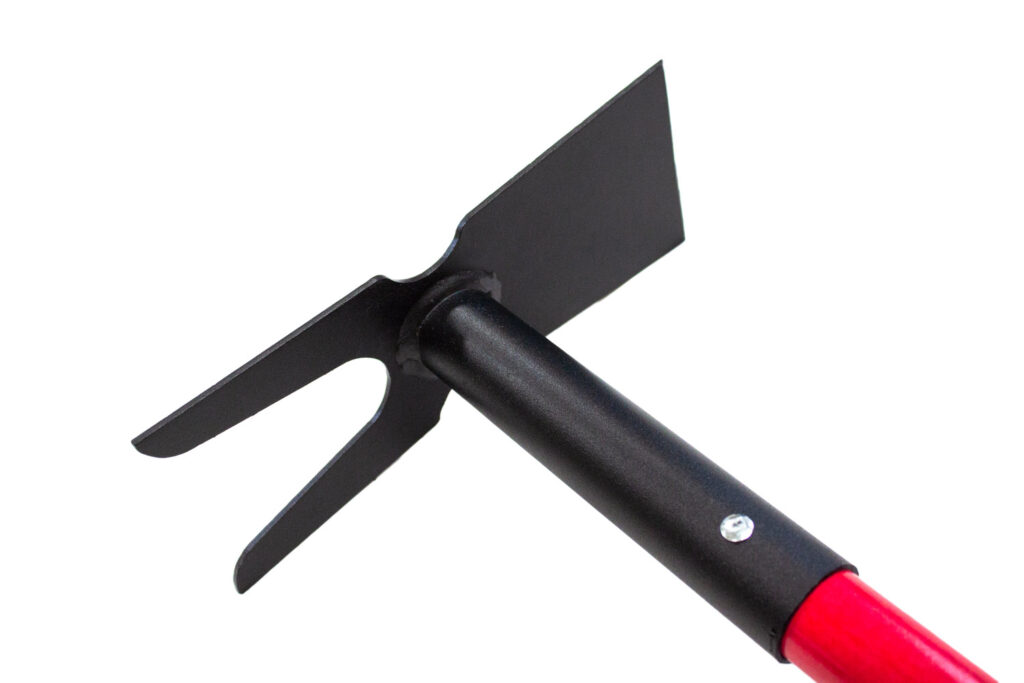
FORK / TINED HOE
Fork hoes have two to three tines and look like little rakes. They’re perfect for loosening and aerating soil or spreading and leveling mulch and gravel. They’re typically made available to purchase with either a long or short handle for all of your projects. A popular variation of the fork hoe, a cultivation hoe, comes with tines on one side and a long paddle blade on the other.
SPECIALTY HOES
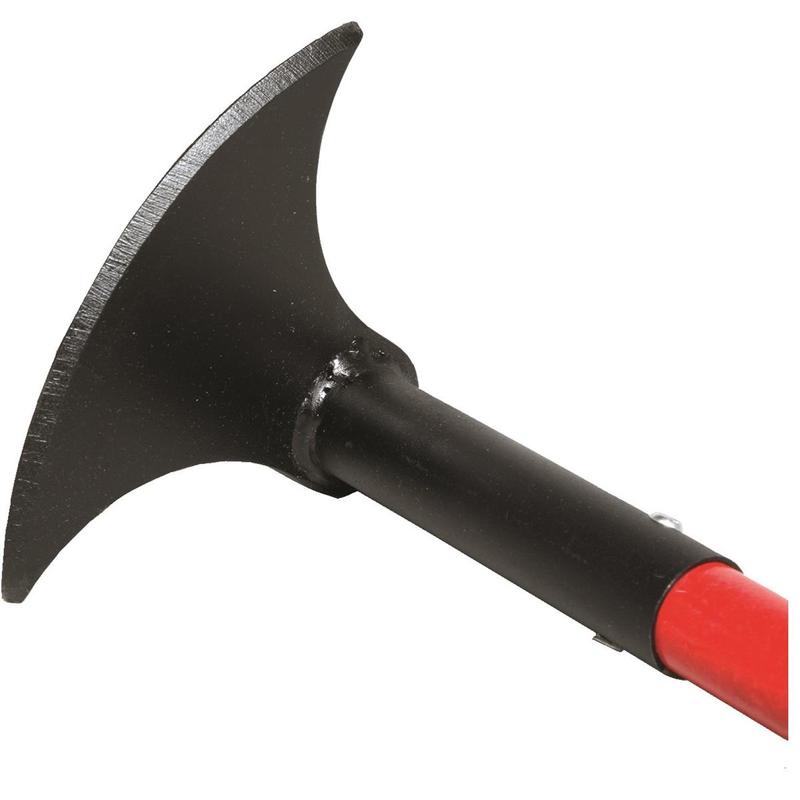
CAVEX HOE
Cavex hoes are similar to other weeding and cultivating hoes in use and results they produce, but it has a very distinct shaped blade. The blade itself is flat and slightly rounded along the outside edge. The blade was cut to make two points at both edges of the curved blade and is welded to the mounting shaft at a 90-degree angle.
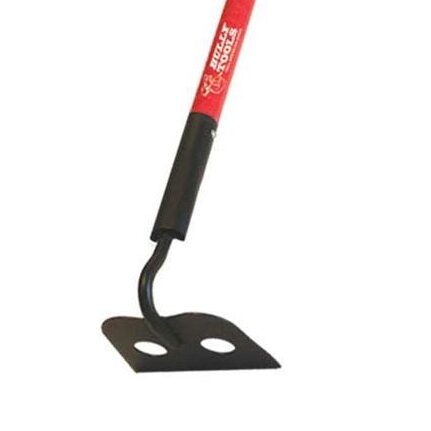
MORTAR / MASON HOE
Mortar hoes are characterized by the holes in their otherwise flat blade. They are meant for mixing mortar and sand into concrete. The holes allow the material to flow through and make it viscous enough to pour.
FINAL THOUGHTS
To find out what type of garden hoe fits your needs, you have to first know what your garden needs!
- If your garden needs to be chopped, dug, or tilled – go with a digging hoe
- If your garden needs to be weeded – use a draw hoe
- If your garden needs to be sowed – create furrows in the soil with a warren hoe
Many – if not all – of these tools are available for purchase online or at a lawn, gardening, or home improvement store. But, if you’re looking for contractor quality tools at consumer prices, look no further than our selection of 100% Made in the USA hand tools from Bully Tools. We have 10 varieties of garden and field hoes that will work hard on your job so you don’t have to. Check out our full selection of top-grade, high-quality tools here.


